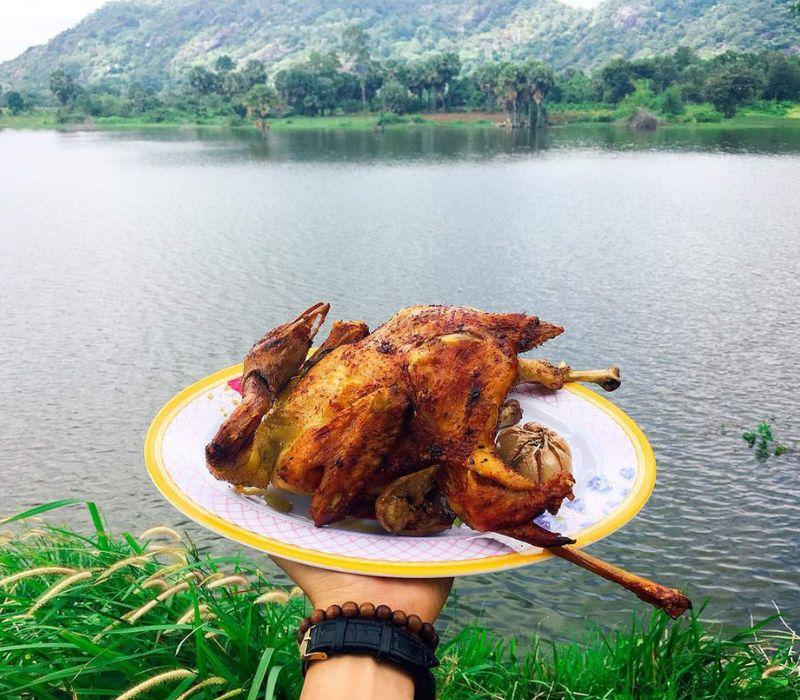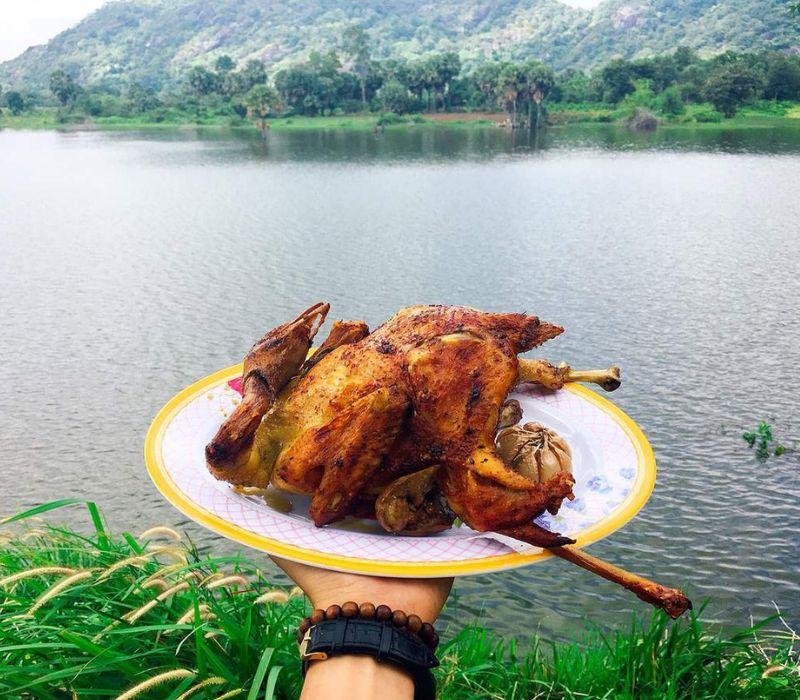6 Pitfalls to Avoid When Traveling in Extreme Heat

It's scorching outside—and summer in the northern hemisphere is far from over. If you're planning a trip to anywhere that isn’t a coolcation this summer, prepare to feel the heat.
A recent summer weather forecast from the Weather Channel and atmospheric intelligence provider Atmospheric G2 indicates that this summer may be one of the hottest on record in the United States. Following last year's warmest November globally since 1940, wildfires are once again erupting in Greece, where last month an American tourist was discovered deceased and three others went missing amid another heat wave. Record-breaking summer temperatures have been scorching across the Western and Eastern United States, with concerns about risks to athletes from potential heat waves at the forthcoming Paris Olympic Games.
With rising temperatures and summer being the peak season for travelers, those with travel plans might be curious about how to stay cool, safe, and comfortable as extreme heat becomes the norm in many destinations worldwide.
Being aware of common mistakes to avoid when traveling in high temperatures can help ensure your safety. Continue reading for key pitfalls to sidestep if you aim to beat the heat and stay secure this summer.
Believing that heat is only hazardous during peak daylight hours
Many people mistakenly think that the risk of heat-related emergencies only occurs during the hottest parts of the day, explains Jeff Weinstein, a medical operations manager at travel risk and crisis response provider Global Rescue. “In reality, any time you are outside in a hot environment, you face risks if you don't take proper precautions,” he adds.
Weinstein identifies the primary health risks linked to extreme heat as follows:
- Heat-related injuries (including heat cramps)
- Heat exhaustion and heatstroke
- Dehydration
- Sunburn and excessive sun exposure
These conditions can occur at any time of the day in hot locations. The Mayo Clinic notes that you’re at risk of heatstroke if your body temperature reaches 104 degrees Fahrenheit or higher, a serious condition that necessitates emergency care due to potential damage to your brain, heart, kidneys, and muscles.
Treating heatstroke as a minor concern
Heatstroke is one of the most alarming medical conditions linked to extreme heat, according to Dr. Matthew B. Shannon, director of community emergency medicine at University of Florida Health in Gainesville, Florida. “Patients with heatstroke are typically very ill,” he notes. “They often become severely dehydrated, losing their ability to sweat, which is our body’s effective cooling system.”
As the body's core temperature increases, Shannon explains, the affected individual may become confused and disoriented, potentially leading to life-threatening consequences and rapid death if immediate cooling measures aren’t implemented.
It's crucial to dial 911 (or the local emergency services number) as soon as you notice signs of confusion or disorientation, advises Shannon. “Move the person to the coolest location possible while waiting for EMS [emergency medical services] to arrive,” he says. “Also, consider soaking some clothing in cool water and gently wiping down the patient until help arrives.”
Shannon further points out that individuals taking diuretics, among other medications, or those with kidney disease and other health issues may be more vulnerable to heat-related injuries.
“I recommend consulting with your primary care physician before spending time in extremely hot environments where the risk of heat-related injuries is elevated,” he advises. Additionally, remember that children and older adults are particularly vulnerable to heatstroke compared to most adults.

Tada Images/Shutterstock
Misunderstanding how to cool off in humid versus dry heat
Weinstein emphasizes the importance of recognizing your environment and adjusting your cooling strategies accordingly.
“In humid conditions, using convection for cooling—like spraying water and fanning—is less effective than conduction (applying cool objects or water directly to the skin),” says Weinstein. This is because convection and conduction cooling techniques depend on the density and moisture concentration in the air of humid versus dry environments.
“When you spray water on someone and fan them, you are mimicking the sweating process to enhance cooling. The issue in a humid setting is that the air is already saturated with water, making it harder for the sprayed water to evaporate from the skin,” he explains.
Dense, humid air is also more challenging to move; in such conditions, fanning is less effective and slower due to the air's heaviness.
Fanning and spraying water are more successful in dry environments because the arid air can absorb more moisture and can be easily moved by fanning, Weinstein notes.
When employing conduction cooling methods to lower your temperature or that of someone else in a humid setting, any object cooler than the surrounding environment can be used, he states.
While ice and ice packs are excellent for cooling in humid conditions, they are often not easily accessible outdoors, says Weinstein. In such situations, dampen a towel or shirt with cold water and place it on the forehead or back of the neck of the person in distress. If using ice, always use a barrier like a thin washcloth or T-shirt between the ice and skin. “Ice can be applied in short intervals and different spots, but be careful not to keep it on the same area for more than 20 minutes,” he advises.
Neglecting electrolytes
Although water is essential for hydration, replenishing electrolytes is also vital during extreme heat or physical activity, notes Weinstein. “Incorporating electrolyte powders or tablets into your rehydration routine is ideal,” he adds.
Aim for an electrolyte solution that isn’t excessively high in sugar. “Not all sports drinks are created equal; those with high sugar content aren’t usually the best option,” warns Shannon. Additionally, avoid sugary sodas and caffeinated drinks, which can act as mild diuretics and lead to dehydration. It’s important to remember that alcohol should never be used to hydrate.
Stur offers TSA-friendly water flavor enhancer drops loaded with electrolytes in new sugar-free and calorie-free flavors like Passionfruit Guava, which you can directly add to water for better hydration. Skratch Labs also provides a powdered, sugar-free, low-calorie Hydration Everyday Drink Mix containing electrolytes.
Wearing overly tight clothing
Certain types of clothing just aren't suitable for hot weather, regardless of their style.
“If you’re heading to a place where high temperatures are anticipated, be sure to plan accordingly and choose your clothing wisely,” advises Shannon.
Opting for loose-fitting attire allows air to flow around your body, he explains. The aim is for sweat to evaporate through the fabric, helping to keep you cool.

Courtesy of Pact and KÜHL
When selecting the ideal clothing, look for lightweight, moisture-wicking fabrics that draw sweat away from your body, helping to keep you cooler. These fabrics also dry faster than many others.
Consider options like moisture-wicking, lightweight T-shirts (and even fitted shirts) from brands such as 2XU and KÜHL, along with breathable shorts from Stio that strike a balance between being too tight and too loose.
For a more stylish look rather than athleisure, Pact offers organic cotton and linen blend tulip back tanks and sets, while Marine Layer’s exceptionally breathable hemp cotton tees are also a great choice.
Ignoring heat considerations in your travel planning
It’s natural to want to make the most of everything your travel destination has to offer, but it’s important to consider the risks associated with heat beforehand.
“If you’re exploring new locations, check the season of your visit and aim to go during cooler periods if possible,” advises Shannon. If summer heat is unavoidable, think about the time of day you’ll be outdoors in the heat. “Is there a cooler time to be outside, like early morning or evening?” he suggests. “A bit of foresight can enhance your travel experience, while inadequate planning and not recognizing the signs of heat-related issues can lead to trouble quickly.”
Steer clear of remote areas during peak heat, and make sure to carry significantly more water than you think you'll need.
“Travelers should ensure they have ample water for effective hydration and allow for potential delays in their plans,” recommends Weinstein. “Don’t forget to hydrate before venturing into the heat.”
If you’re heading to a remote location, whether for a day or longer, consider bringing additional gear such as a satellite phone or SOS device, water-collection bags for gathering water, a means to purify water, an emergency shelter, and navigation tools, advises Weinstein.
Informing someone about your location is a simple yet effective precaution.
“Ensure your family and friends know where you are and when you plan to return,” advises Shannon.
Evaluation :
5/5



